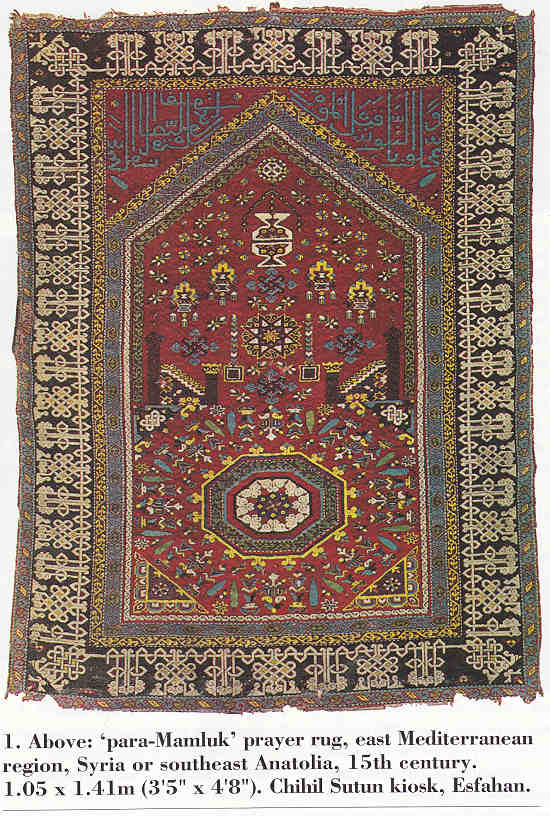Hi Pierre,
About the para-Mamluk on FIG 50

I found an article by John Mills on Hali 93 (July 1997) presenting the painting:
Mark Enthroned with Saints (detail) by Giovanni Martini da Udine, 1501, Duomo di Udine.

and a related rug

Title of the article:
“THE CHIHIL SUTUN PARA-MAMLUK PRAYER RUG –
An unusual and enigmatic woolen prayer rug is among the precious relics preserved in the Chihil Sutun kiosk in Esfahan, built in the mid 17th century by Shah Abbas II. This article considers the relationship of the Chihil Sutun prayer rug to the well-known East Mediterranean (so-called ‘Damascus’) ‘compartment’ or ‘chess board’ carpets and the design-related ‘para-Mamluk’ rugs.”
Trying to synthesize at the maximum the article: while compartment rugs share design elements with the Cairo-made ‘Mamluks’, they differ in structure. Their wool is Z-spun, like the Anatolians but unlike the Cairenes, which are S-spun. Their knots, however, are asymmetric, like the Mamluks and unlike the Anatolians.
That’s why many attribute them to the environs of Damascus or Aleppo.
The structure of the ‘para-Mamluk’ is less defined, meaning that they could use both types of knots (even on the same rug).
The prayer rug in question is symmetrically knotted. Its unique Kufik border is unknown (according to Mills) in its exact rendition on surviving rugs but illustrated on other paintings of the same period.
In short, “
The evidence from the paintings ant the Chihil Sutun prayer rug itself suggests that it is a 15th century artefact woven within the Mamluk cultural sphere, in an area susceptible to direct and relatively recent Timurid influence. This seems to point once again to the northern part of the Mamluk domain, either Damascus or further north in Aleppo or the Adana Plain.”
I hope this is of some interest…
Best regards,
Filiberto